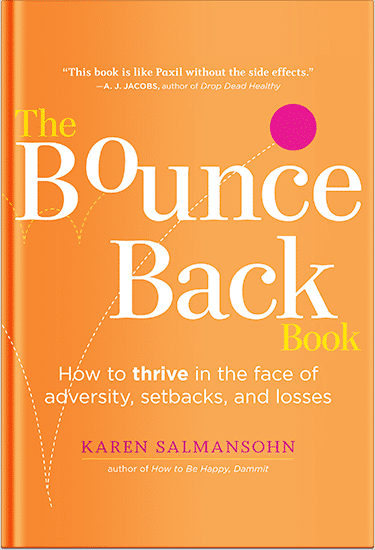 Ultrasound scans are one of the most widely used and versatile diagnostic tools in healthcare. They give clear, real-time images of the inside of the body using high-frequency sound waves, without exposing patients to radiation. While some people still think of ultrasound in the context of pregnancy, it has a far wider range of uses, many of which have nothing to do with prenatal care.
Ultrasound scans are one of the most widely used and versatile diagnostic tools in healthcare. They give clear, real-time images of the inside of the body using high-frequency sound waves, without exposing patients to radiation. While some people still think of ultrasound in the context of pregnancy, it has a far wider range of uses, many of which have nothing to do with prenatal care.
In fact, in many clinics and hospitals, ultrasound is a first-choice investigation for a variety of conditions affecting muscles, joints, blood vessels, and internal organs. This article looks at how ultrasound works, the types of problems it can help diagnose, and when your doctor might recommend it.
How Ultrasound Works
A transducer is a handheld device used during an ultrasound. This is placed on the skin over the area being examined after a thin layer of gel is applied. The transducer emits sound waves into the body, which are reflected by tissues and detected as echoes. These echoes are turned into images on a monitor in real time.
There are several variations of ultrasound technology:
- Standard ultrasound: Produces two-dimensional images of internal organs and tissues.
- Doppler Ultrasound: Determines the blood flow speed and direction in vessels.
- High-frequency musculoskeletal ultrasound: Gives detailed images of muscles, tendons, and ligaments.
Common Uses for Ultrasound
Ultrasound is used in many areas of medicine because it is safe, quick, and gives immediate results. Here are some of the most common applications.
1. Abdominal Scans
An abdominal ultrasound can check the liver, gallbladder, pancreas, kidneys, and bladder. It can help detect gallstones, kidney stones, cysts, or signs of organ inflammation.
2. Vascular Scans
A vascular ultrasound examines blood flow in arteries and veins. It can detect blockages, narrowing, or clots, and can be used to monitor circulation problems in people with heart or metabolic conditions.
3. Musculoskeletal Scans
These scans give detailed images of muscles, tendons, ligaments, and joints. They are often used for sports injuries, swelling, or unexplained joint pain.
4. Soft Tissue Lumps
If a lump appears under the skin, an ultrasound can show whether it is solid or fluid-filled, helping guide the next steps in diagnosis or treatment.
When a Doctor Might Recommend an Ultrasound
Your doctor may suggest an ultrasound for several reasons:
- Persistent or unexplained pain in the abdomen, joints, or soft tissues.
- Swelling or lumps that need further investigation.
- Signs of reduced blood flow, such as cold or pale limbs.
- Monitoring an existing condition for changes over time.
In some cases, ultrasound is used as part of a preventive health check even if you have no symptoms. Data from the UK screening uptake statistics show how imaging and other screening programmes are used to detect problems early in different parts of the country.
Ultrasound and Preventive Healthcare
Preventive healthcare is about finding and addressing health risks before they develop into more serious issues. Ultrasound can play a role in these checks, particularly for vascular health, organ screening, and musculoskeletal monitoring.
The Health Survey for England data shows that many people live with conditions such as high blood pressure or diabetes without knowing it. These conditions can lead to complications that ultrasound scans may help detect, such as kidney damage or circulation problems.
What to Expect During an Ultrasound
Most ultrasound scans are straightforward and take between 15 and 30 minutes. You will be asked to lie down, and the sonographer will apply gel to your skin. The transducer is then moved over the area of interest while images appear on the monitor.
For certain types of scans, you may be asked to fast for a few hours beforehand or drink water to fill your bladder. These instructions help improve the quality of the images.
When Ultrasound May Not Be Enough
While ultrasound is excellent for many situations, it is not always the final answer. Some areas, such as the lungs or parts of the digestive tract, may require other imaging methods like MRI or CT scans for a complete view. The right test will be recommended by your doctor according to your symptoms and medical history.
Accessing Ultrasound Services
In the NHS, you usually need a GP or specialist referral for an ultrasound. This ensures that the scan is clinically appropriate. Private healthcare can offer faster access and greater flexibility. For example, private health assessment services from providers like Vista Health can include an ultrasound as part of a comprehensive assessment, often with minimal waiting times.
Balancing the Benefits and Limits
Ultrasound is safe, cost-effective, and widely available, but like all tests, it should be used appropriately. A good healthcare provider will recommend it when there’s a clear reason, whether that’s ongoing symptoms, a specific clinical suspicion, or a preventive check for those at higher risk.
Final Thoughts
Ultrasound is far more than a tool for pregnancy care. It plays a vital role in diagnosing and monitoring a wide range of health conditions. Whether used to investigate symptoms, monitor an existing problem, or form part of a preventive health plan, it can provide fast and valuable answers.
If you have symptoms, concerns, or risk factors, speak to a healthcare professional about whether an ultrasound might be right for you. In many cases, it could be the first step toward clarity and peace of mind.
P.S. Before you zip off to your next Internet pit stop, check out these 2 game changers below - that could dramatically upscale your life.
1. Check Out My Book On Enjoying A Well-Lived Life: It’s called "Your To Die For Life: How to Maximize Joy and Minimize Regret Before Your Time Runs Out." Think of it as your life’s manual to cranking up the volume on joy, meaning, and connection. Learn more here.
2. Life Review Therapy - What if you could get a clear picture of where you are versus where you want to be, and find out exactly why you’re not there yet? That’s what Life Review Therapy is all about.. If you’re serious about transforming your life, let’s talk. Learn more HERE.
Think happier. Think calmer.
Think about subscribing for free weekly tools here.
No SPAM, ever! Read the Privacy Policy for more information.
One last step!
Please go to your inbox and click the confirmation link we just emailed you so you can start to get your free weekly NotSalmon Happiness Tools! Plus, you’ll immediately receive a chunklette of Karen’s bestselling Bounce Back Book!


 Ultrasound scans are one of the most widely used and versatile diagnostic tools in healthcare. They give clear, real-time images of the inside of the body using high-frequency sound waves, without exposing patients to radiation. While some people still think of ultrasound in the context of pregnancy, it has a far wider range of uses, many of which have nothing to do with prenatal care.
Ultrasound scans are one of the most widely used and versatile diagnostic tools in healthcare. They give clear, real-time images of the inside of the body using high-frequency sound waves, without exposing patients to radiation. While some people still think of ultrasound in the context of pregnancy, it has a far wider range of uses, many of which have nothing to do with prenatal care.